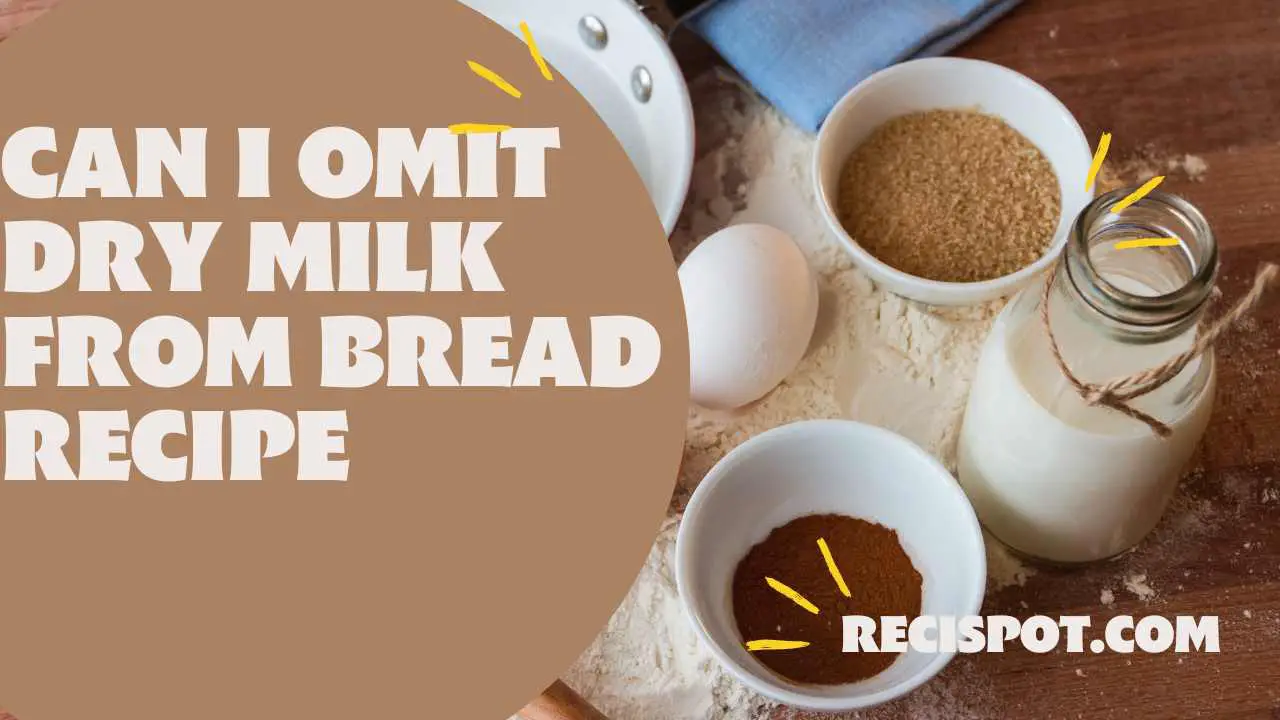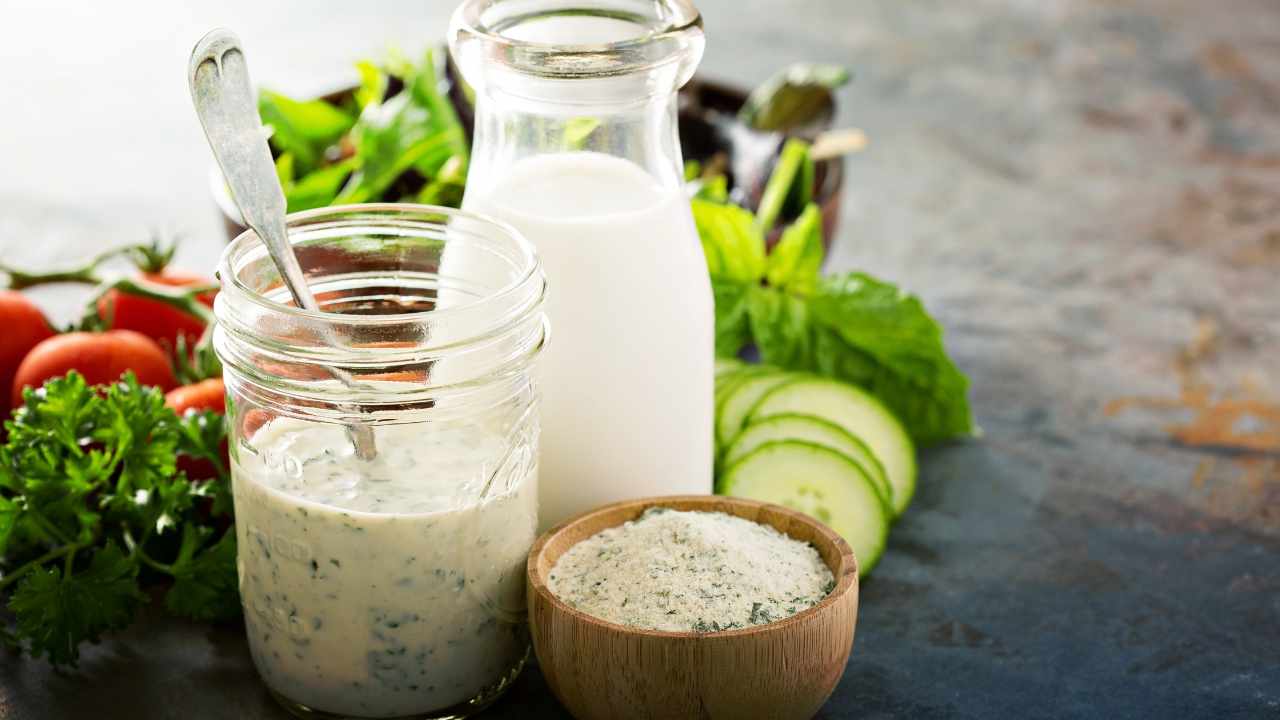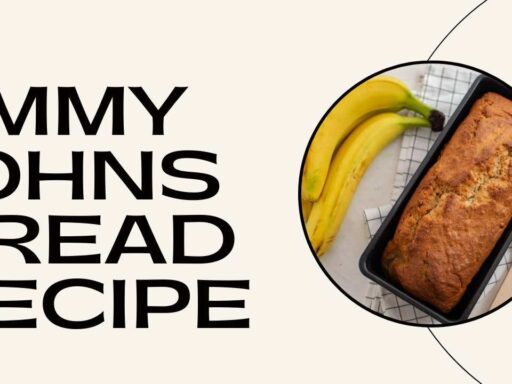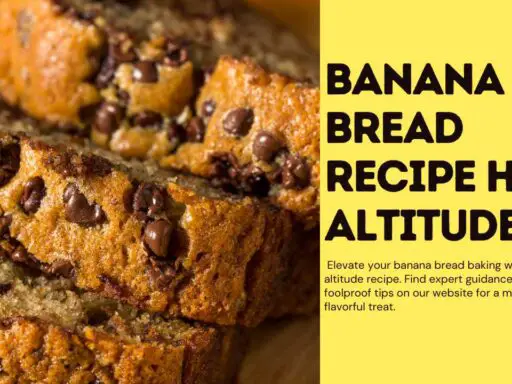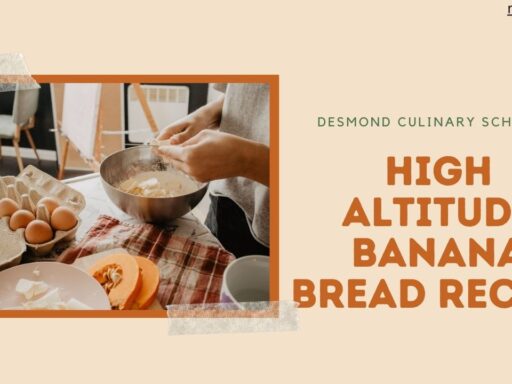Find out how to make Can I omit dry milk from bread recipe with our collection of recipes. Learn the secrets to baking delicious bread without this common ingredient.
Ever found yourself jealously eyeing a Can I omit dry milk from bread recipe, your heart yearning to knead and bake, only to stumble upon an ingredient that gives you pause – dry milk? It’s a common scenario and you’re not alone. But does dry milk truly make a difference? Can you simply omit it from your bread recipe? Let’s unravel this baking mystery.
“The art of baking bread carries a world of intrigue, from choosing the perfect flour blend to knowing when your dough has proofed just right. Understanding the role that each ingredient plays can truly elevate your bread game.”
In this article, we’ll be examining how dry milk affects your recipe, alternatives you can use, and, most importantly, if and how you can omit it from your bread recipe. So, let’s embark on this ‘quest for the perfect loaf’ together.
Understanding the Role of Dry Can I omit dry milk from bread recipe
So, you may be wondering, is it possible to leave out dry milk from your bread recipe? The answer is ‘yes’. You can make alterations to accommodate the absence of this ingredient. Although dry milk serves a purpose, it’s not always essential, and there are plenty of alternatives available. Let’s explore how to do this.
The easiest switch would be to use regular liquid milk but keep in mind that this should only be done in recipes that also include added water. Replacement is easy: for every 1/4 cup (32 grams) of dry milk and 1 cup (240 mL) of liquid in the original recipe, simply substitute with 1 cup (240 mL) of liquid milk. Thanks to its creaminess, liquid milk can fill in for dry milk and still deliver appetizing results.
Perhaps, you’re thinking beyond just eliminating dry milk, and targeting a dairy-free or vegan recipe. No worries! There are options for you too. You can stick with soy milk powder, a convenient non-dairy alternative. It’s not only nutritionally akin to reduced-fat milk, but it can also be substituted in equal measure in nearly any recipe.
If you’re not a fan of soy, don’t fret. There are other milk alternatives like almond, oat, or rice powder. Note, though, that rice powder has a bit more sweetness and is best suited for sweeter dishes like desserts or granola bars. So, for a savory loaf of bread, you might want to skip the rice powder option.
If you come across a recipe that calls for buttermilk powder, there’s a solution for this as well. Blend 1 cup (240 mL) of your chosen milk alternative with one tablespoon (15 mL) of vinegar or lemon juice. Let it sit for about 5-10 minutes before using it in your recipe. This creates a tangy buttermilk-like effect.
So there you have it – whether you’re simply out of dry milk, desire to tweak your recipe, or adhere to specific dietary needs, there’s no need to fret. Baking is flexible, and so are our bread recipes.
Analyzing the Effects of Omitting Dry Milk from Your Loaf
It’s important to understand that omitting dry milk from your bread recipe doesn’t necessarily spell disaster for your baking endeavor. Dry milk, for all its value, is primarily used for the taste, texture, and color of your bread. If you’re considering eliminating dry milk from a recipe, you might experience minute differences in taste and texture, but it’s usually not significant enough to dramatically affect the final outcome of your bread.
That said, there are numerous substitutes available, whether you’re looking for a dairy alternative or you’re simply out of dry milk. One good example is liquid milk, which can be a suitable replacement for milk powder in bread recipes. It’s important to remember that these substitutes are only suitable for recipes that include added water. The substitution ratio for liquid milk is 1 cup (240 mL) for every 1/4 cup (32 grams) of dry milk and 1 cup (240 mL) of liquid in the recipe.
If you’re looking for a nondairy alternative, several options like soy milk powder, oat milk, and almond milk come to mind. Soy milk powder, in particular, is nutritionally similar to reduced-fat milk and provides a great texture to your loaf. It can be substituted in equal amounts for dry milk in your bread recipe.
To replace buttermilk powder with a nondairy alternative, such as almond, oat, or soy milk, you can mix 1 cup (240 mL) of the milk alternative with one tablespoon (15 mL) of vinegar or lemon juice. Allow the mixture to sit for 5-10 minutes before incorporating it into the recipe.
So, it’s clear that while dry milk does serve a specific purpose in your bread recipe, excluding it doesn’t mean you’ll end up with a falling-flat loaf of bread. The possible substitutes above should keep your bread on the rise, taste delicious, and even meet dietary restrictions if that’s a priority. Happy baking!
Credit: www.pexels.com
Why Dry Milk is Often Included in Bread Recipes
frequently used in bread recipes because of the innumerable benefits it offers. It provides a smooth texture to the bread, improves the richness of color in the crust, and contributes to the overall flavor profile. Dry milk, being a concentrated form of milk, imparts a creamy and slightly sweet taste, adding depth to your loaf.
Moreover, dry milk enhances the nutritional value of the bread. High in calcium and protein, it can make your homemade bread a healthier option as compared to commercial loaves. Furthermore, since it is powdered, it has a longer shelf life, making it a convenient ingredient for bread recipes.
Options If You Choose to Omit Dry Milk
If you’re wondering whether you can omit dry milk from your bread recipe, the answer is yes, with a few alterations. You can substitute regular liquid milk for milk powder in recipes that also include added water. In such cases, the water in the recipe is replaced by the same amount of liquid milk. However, bear in mind that the liquid content should be adjusted to maintain the bread’s texture.
Apart from using liquid milk, there are various other substitutes you can consider, especially if you are aiming for dairy-free bread or if you have dietary restrictions. For instance, soy milk powder or liquid milk alternatives like almond, oat, or soy milk can be equally used in place of dry milk.
Another notable alternative is rice powder, which is typically sweeter than milk powder, making it a great choice for recipes that call for sweeter bread. However, if your recipe specifies the use of buttermilk powder, a combination of a cup of milk alternative with a tablespoon of vinegar or lemon juice can mimic the taste and application of buttermilk powder.
Hence, while dry milk has its advantages, omitting it from your bread recipe will not jeopardize your loaf, given you make the right adjustments and use appropriate substitutes. This opens an array of possibilities to tailor your bread recipes to suit different dietary preferences and requirements.
Pros and Cons of Omitting Dry Milk from Bread Recipes
| Pros of Omitting Dry Milk | Cons of Omitting Dry Milk |
| Ability to make a recipe dairy-free or vegan using alternatives like almond, oat, or soy milk. | Some alternatives, like coconut milk powder, could result in heavier baked goods due to their high-fat content. |
| Non-dairy alternatives such as soy milk powder can be used in equal amounts, making substitution simple. | Lack of dry milk might affect the bread’s texture and richness, especially in certain recipes that rely heavily on dry milk. |
| Increased flexibility in recipe adjustments by using liquid milk or milk substitutes. | The taste of the bread could change subtly depending on the alternative used. |
Exploring Suitable Substitutes for Dry Milk in Bread Recipes
If you’re planning to swap out dry milk in your bread recipe, it’s crucial to understand the available alternatives. Here, we provide some options and guidelines on how to use them.
Regular liquid milk springs to mind as the most straightforward substitute. You may use this ingredient in recipes that also require water addition. The rule of thumb here is a 1:1 ratio. That means you replace every 1/4 cup (32 grams) of dry milk and 1 cup (240 mL) of liquid in your original recipe with one cup of regular liquid milk.
Soy milk powder serves as another viable nondairy alternative. Nutritionally similar to reduced-fat milk, it’s used in equal amounts as dry milk in a recipe. Another handy detail is that it’s shelf-stable, reducing the need for frequent restocking. This makes it an excellent choice for those looking for a long-term solution.
Get creative with milk substitutes by exploring the realms of liquid milk alternatives, especially if you’re considering a vegan or dairy-free recipe. Almond milk powder, oat milk to bread? Powder and even rice milk powder are worthy contenders. They’re plant-based alternatives that can replace dry milk in equivalent amounts. However, remember to only use
If you’re out of buttermilk powder, you can still whip up a fluffy and savory loaf. Just mix 1 cup (240 mL) of your preferred milk substitute with one tablespoon (15 mL) of vinegar or lemon juice. Let this cocktail sit for 5-10 minutes before including it in your recipe.
For folks who dare to spice things up a bit, coconut milk powder could be your secret ingredient. It’s a rocking substitute for whole-fat milk powder, especially in soups, curries, and sauces. But who’s to say it won’t add a delightful twist to your morning coffee or tea?
And if you’re looking for a dairy-free option, soy milk powder is a great alternative. Not only does it have a similar texture and taste to regular milk, but it also contains essential nutrients like calcium and vitamin D. Plus, it’s perfect for making vegan versions of classic dishes like mac and cheese or creamy mashed potatoes.
So don’t let a missing ingredient stop you from creating delicious meals. With these simple substitutions, you can continue writing the content with confidence, knowing that your recipe will turn out just as tasty as ever. Just remember to adjust the liquid-to-powder ratio accordingly and enjoy experimenting with new flavors and textures in your favorite dishes.
Frequently Asked Questions
Can I leave out dry milk from my bread recipe entirely?
Yes, you can. The absence of dry milk might slightly change the texture and browning of the bread, but it will bake just fine. However, do bear in mind that dry milk’s role isn’t purely for flavor; it enhances the dough’s structure and can extend the bread’s shelf life.
Could substituting with liquid milk affect my recipe?
Substituting dry milk with a liquid milk alternative in your recipe does introduce additional liquid, so you may, as a result, have to decrease the amount of other liquids in your recipe to maintain the appropriate consistency for your dough.
Is there a non-dairy alternative to dry milk that I can use in my bread recipe?
Yes, soy milk powder, for instance, serves as a reliable non-dairy alternative. It’s nutritionally similar to reduced-fat milk, and you can substitute in equal amounts for dry milk. Other options include almond or oat milk in liquid or powdered form. Rice powder, also known as rice flour, is a viable alternative for those who are vegan, lactose intolerant, or allergic to soy or dairy.
Conclusion of Can I omit dry milk from bread recipe
There are several non-dairy alternatives to dry milk that you can use in your. Soy milk powder, almond or oat milk, and rice powder are all viable options that can be used in equal amounts as a substitute for dry milk. However, keep in mind that these alternatives may introduce additional liquid into your recipe, and adjustments may need to be made to maintain the appropriate consistency for your dough.
With these options available, those who are vegan, lactose intolerant, or allergic to dairy can still enjoy delicious homemade bread without sacrificing their dietary restrictions. Experiment with different alternatives and find the one that works best for you and your recipe. Happy baking!
